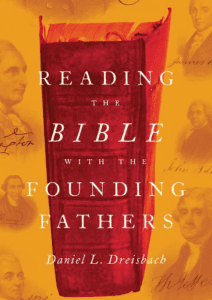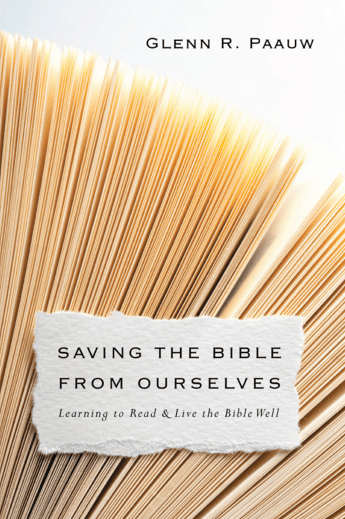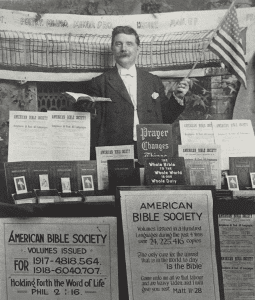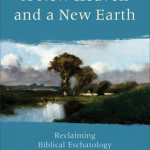This post is part 5 in a series on The Fall and Sin After Darwin. We’ve been looking at the essays in a book Theology After Darwin centered around a simple question: What are the implications for Christian theology if Darwin was right? In conjunction with this we are also looking at three articles in the recent theme issue of the ASA Journal Perspectives on Science and Christian Faith (v. 62 no. 3 2010) Reading Genesis: The Historicity of Adam and Eve, Genomics, and Evolutionary Science. Before continuing on to discuss the second half of Dr. Schneider’s article I would like to move over to discuss the article by C. John Collins, Professor Old Testament at Covenant Theological Seminary in St. Louis Missouri. In his article “Adam and Eve as Historical People, and Why It Matters” Dr. Collins makes a case for a historical understanding of Adam and the Fall and suggests scenarios that could be consistent with an old earth and evolutionary biology. The historicity proposed by Dr. Collins stands in contrast to the literary understanding of Dr. Harlow, and his arguments will help frame some of the discussion of the Fall when we return to discuss the second part of Dr. Schneider’s article.
 The arguments for Adam and Eve as historical people, first parents, through whom sin entered human experience are biblical and theological. Dr. Collins puts forth the position that the Fall is historical and uses this term as a shorthand:
The arguments for Adam and Eve as historical people, first parents, through whom sin entered human experience are biblical and theological. Dr. Collins puts forth the position that the Fall is historical and uses this term as a shorthand:
To the extent that I use the terms myself, I employ them as a shorthand as well. I imply, not simply that humans are “sinful” (which is something we all can see), but that sinfulness was not part of our original make-up, and derives from some primal rebellion on the part of our first ancestors. (p. 148)
The Fall is a historical event, Genesis is history-like. While this does not mean that Genesis is “straight history,” there is a historical foundation. Collins thinks that the author intended to convey history in literary form.
The author was talking about what he thought were actual events, using rhetorical and literary techniques to shape the readers’ attitudes toward those events. (p. 149)
The bottom line: while we may not have a historical account of the fall, we do have an account of a historical fall. (A turn of phrase borrowed from Henri Blocher.)
Do you think that there is a historical core to the story of Genesis 1-11? How important is this historical core?
In Dr. Collins’s article the concept of a historical fall, even if Genesis 2-3 is not a historical presentation of the fall, is contrasted with views often expressed where the author used imaginary history to convey timeless truths or story to convey theological and moral truths. There is an important distinction here – one that Collins fleshes out. The contact with ANE stories is significant, the author(s) used figurative language and forms of presentation familiar to readers of the day. But the intent is not fanciful presentation of timeless or moral truth.
Now, Genesis 1–11 has so many points of contact with Mesopotamian stories of origins, ancient kings, the flood, and subsequent kings, that we should find those stories as the proper literary backcloth against which the Genesis stories were written. Genesis 1–11 aims to provide the true pre- and protohistory of the Bible’s alternative worldview story, whose “purpose is to shape Israel’s view of God, the world, and mankind, and their place in it all.” (p. 150)
And after some discussion of various sources:
The conclusion to which this discussion leads us is this: If, as seems likely to me, the Mesopotamian origin and flood stories provide the context against which Genesis 1–11 are to be set, then they also provide us with clues on how to read this kind of literature. These stories include divine action, symbolism, and imaginative elements; the purpose of the stories is to lay the foundation for a worldview, without being taken in a “literalistic” fashion. We should nevertheless see the story as having what we might call a “historical core,” though we must be careful in discerning what that is. Genesis aims to tell the story of beginnings the right way. (p. 151)
The biblical story and the historical core of Genesis 1-11. Having framed the question in this fashion Dr. Collins turns to look at the nature of the biblical story that informs us of the historical core within Genesis 1-11. Genesis is not independent of the biblical story – and the story permeates all of scripture. This is a story of creation, fall, redemption and the coming kingdom. Sin and rebellion from God form a core part of this story.
The story of Adam and Eve, and their first disobedience, explains how sin, the alien intruder, first came into human experience, though it hardly pretends to explain how rebellion against God (as expressed in the serpent’s speech) originated to begin with. (p. 155)
Collins discusses the image of God as expressing the truth that humans are special and that in some way there is a special creation, even if God’s created method used the evolution of primates to produce the vessel. The key point, though, is that sin is not part of humankind’s created constitution. Sin is an intrusive element that broke the relationships between humans and God, self, others, and the world. God’s action in the world, his covenant relationship with Abraham and Israel and the life, death, and resurrection of Jesus as Messiah are historical acts that address a historical problem.
So what elements does Collins suggest are required in an theologically sound scenario? He suggests that 40,000 years ago or 200,000 years ago there was some kind of special act that created humans in the image of God. The biblical chronology is not intended to be a chronologically accurate presentation without gaps. Some form of ‘polygenism’ in a small community is consistent, but we are all one people and are all part of the rebellion against God suffering from the consequences of broken relationships. The death introduced by the fall was spiritual death – yet he feels that physical death was not the intended outcome for the original humans. “The spiritual death resulting from their disobedience ruined whatever process would have kept them alive.” (p. 159)
The four required elements according to Collins (p. 159-160):
1. To begin with, we should see that the origin of the human race goes beyond a merely natural process. This follows from how hard it is to get a human being, or, more theologically, how distinctive the image of God is.
2. We should see Adam and Eve at the headwaters of the human race. This follows from the unified experience of humankind, as discussed earlier (pp. 155–8). How else could all human beings come to bear God’s image?
3. The Fall, in whatever form it took, was both historical (it happened) and moral (it involved disobeying God), and occurred at the beginning of the human race. The universal sense of loss described earlier (pp. 155–8) makes no sense without this. Where else could this universality have come from?
4. If someone should decide that there were, in fact, more human beings than just Adam and Eve at the beginning of humankind, then, in order to maintain good sense, he or she should envision these humans as a single tribe. Adam would then be the chieftain of this tribe (preferably produced before the others), and Eve would be his wife. This tribe “fell” under the leadership of Adam and Eve. This follows from the notion of solidarity in a representative. Some may call this a form of “polygenesis,” but this is quite distinct from the more conventional, and unacceptable, kind.
This leaves a good bit of room for us to wrestle with the nature of Adam, Eve, and the Fall. The view expressed by C.S. Lewis in Ch. 5 of The Problem of Pain is an approach which includes all of these elements – the fall is historical, there was a real rebellion from God, and all humankind is involved. This is not the only possible scenario, nor is it necessarily the one that Dr. Collins prefers, but it is within the pale. As I said on an earlier post on this topic, CS Lewis: Outside the Pale?, this kind of scenario is along the lines of my thinking these days, although other positions are also reasonable. I don’t find it a settled question in my own thinking.
Dr. Collins concludes where I think many of us will conclude. The Christian story makes sense of the world through the elements of good creation, Fall, redemption “as God’s ongoing work to restore creatures to their proper functioning“, and consummation. If we deny that people have a common source or that sin is an alien intruder then we undermine this story and undermine the gospel.
This is not the last word on the subject – but is enough for today.
What do you think? Is there a historical core within the story of Gen. 1-11? Is this historical core an essential part of the Christian story?
If you wish to contact me directly you may do so at rjs4mail[at]att.net
You can subscribe to a full text feed of my posts at Musings on Science and Theology.











